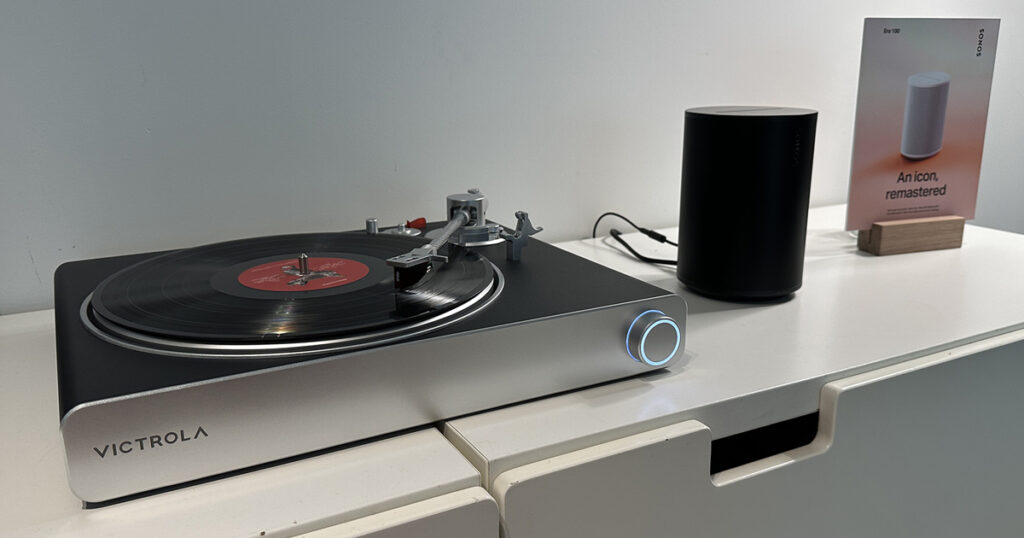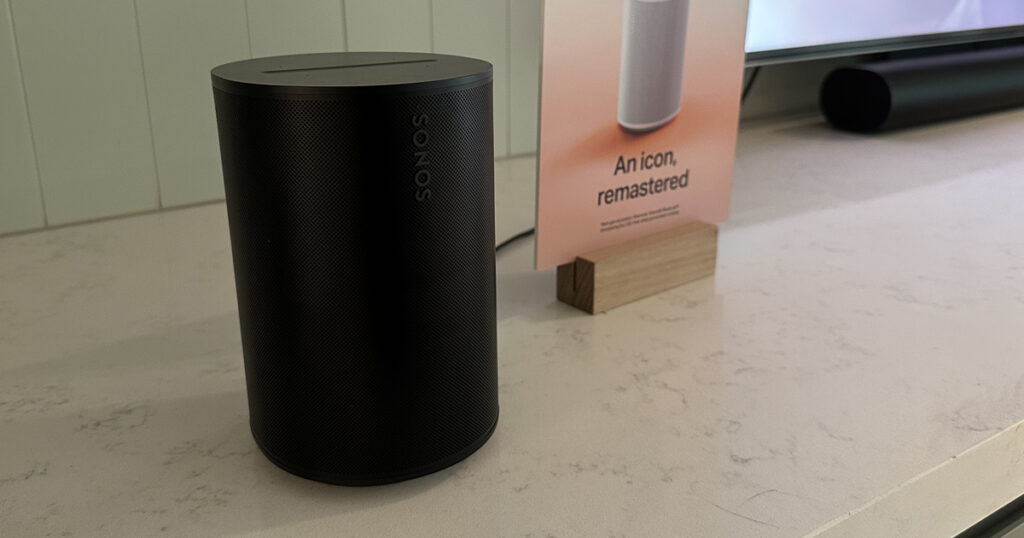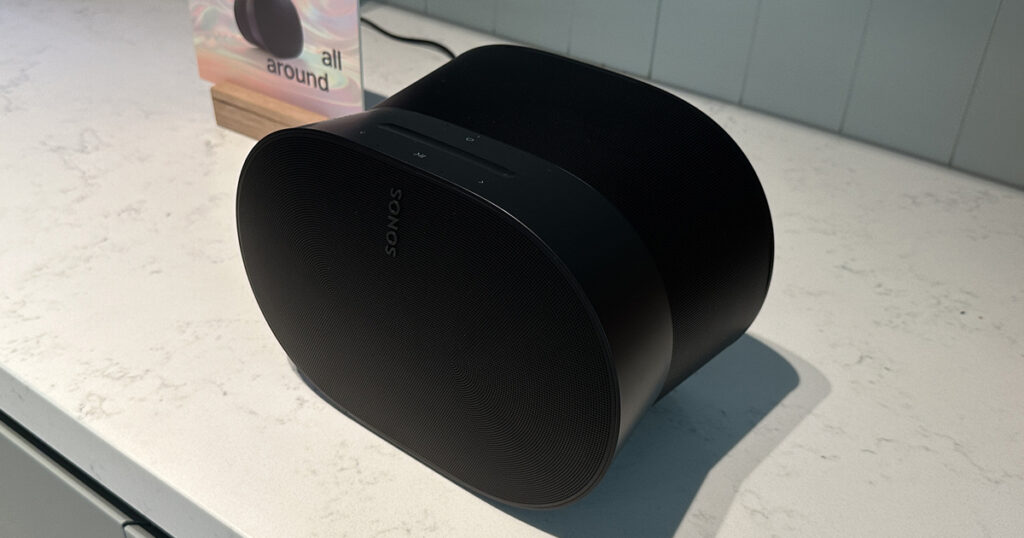Bigger sound, more options.
The Era 100 and Era 300 are Sonos’ most versatile speakers yet
Sonos today announced the Era 100 and Era 300, two new home wireless speakers that mark the most significant refresh the audio manufacturer's products have had in years.
The Era 100 is a new-entry level speaker that ostensibly replaces the Sonos One, while the Era 300 is a new top-end model with Dolby Atmos support that will sit next to the Sonos Five in the product portfolio.
While the pair sit at different ends of the pricing spectrum, they both share a couple of features that make them the most versatile speakers Sonos has made to date.

To start, the Era 100 and Era 300 both support Bluetooth, which is a first for a Sonos speaker without a battery. They also support line-in via USB-C, allowing users to connect devices like a turntable. This is especially notable on the Era 100, given you previously had to buy a high-end Sonos speaker or a specialised accessory for line-in support. You will however need an official Sonos USB-C dongle if you want to use a 3.5mm cable. These start at $35.
The Era 100 and Era 300 are also the first at-home Sonos products to support Trueplay without the need for an iOS device. Trueplay is Sonos tech that retunes the speakers to the room they're in. Until now, this has been done using the Sonos app on iPhone or iPad, but the Era 100 and Era 300 are able to automatically tune themselves using integrated microphones, allowing Android users to take advantage of the tech. Using an iOS device will still have some advantages over the automatic Trueplay process, however, but it's a big improvement on being locked out from the option altogether.
One omission to note is Google Assistant support. While past Sonos devices have supported Google Assistant, the Era 100 and Era 300 don't. If you have another Sonos device with Google Assistant, you can still use it to control them, however. The Era 100 and Era 300 still support Alexa and also have access to Sonos Voice if you're happy to use US English.

As aforementioned, the Era 100 (pictured above) effectively replaces the Sonos One. It has the same footprint, but is a little taller. In terms of sound quality, it now has two tweeters rather than just one, which should allow for some stereo separation. The woofer is also 25% larger, for better bass.

The Era 300 is a new beast entirely, with a rather unique bulbous design. The speaker is designed for spatial audio, and will support Dolby Atmos tracks from Amazon Music and Apple Music come March 29. In order to achieve this, it has an upward-firing tweeter, a front-firing tweeter, and side-firing tweeters and bass drivers on each side.
Notably, you'll be able to use a pair of Era 300s as rear speakers in a Sonos home theatre setup, alongside a Sonos soundbar and subwoofer. If you're using them with an Arc or a second-generation Beam, the Era 300s will be able to provide upward-firing sound for content that supports it.
Pre-orders for the Era 100 and Era 300 start today ahead of a March 29 release date. The Era 100 retails for $399, making it a little more expensive than the outgoing Sonos One, which sold for $319.
The Era 300 will set you back $749, making it slightly cheaper than the $799 Sonos Five. A Sonos spokesperson told us the company is keeping the Five in the family for those who'd prefer a more traditional stereo sound.
The voice assistant-less Sonos One SL will continue to be available for a couple of months as an entry-level speaker. It still retails for $289.
Related Articles




